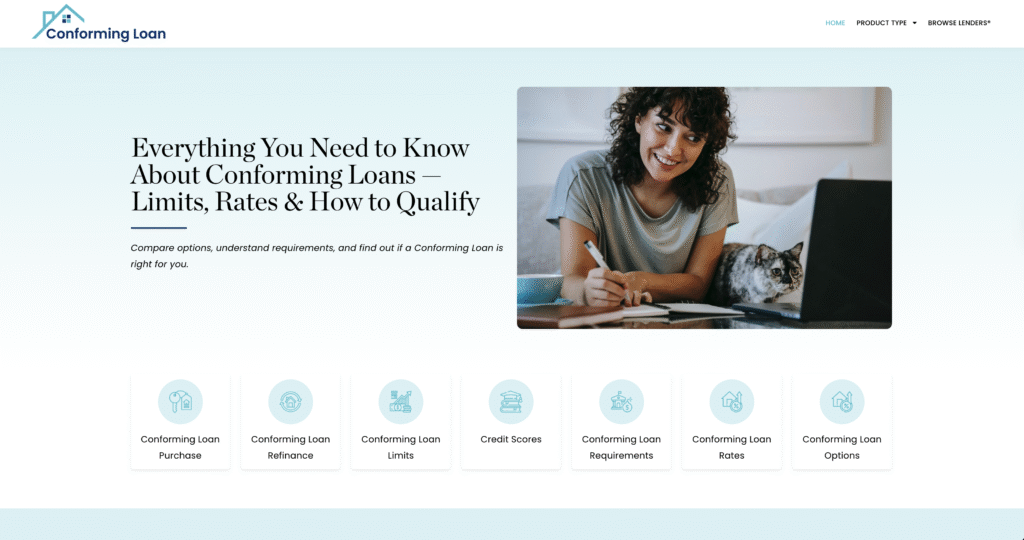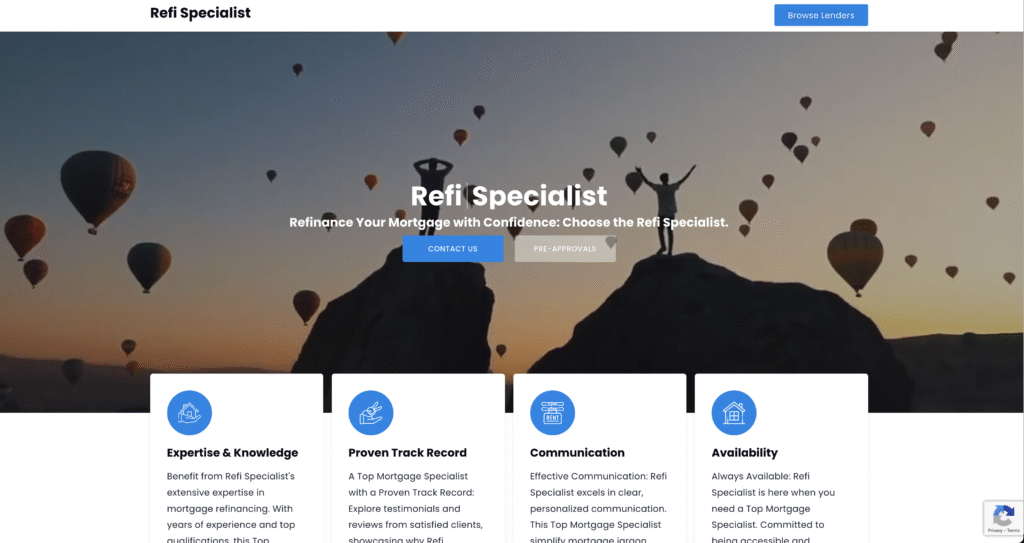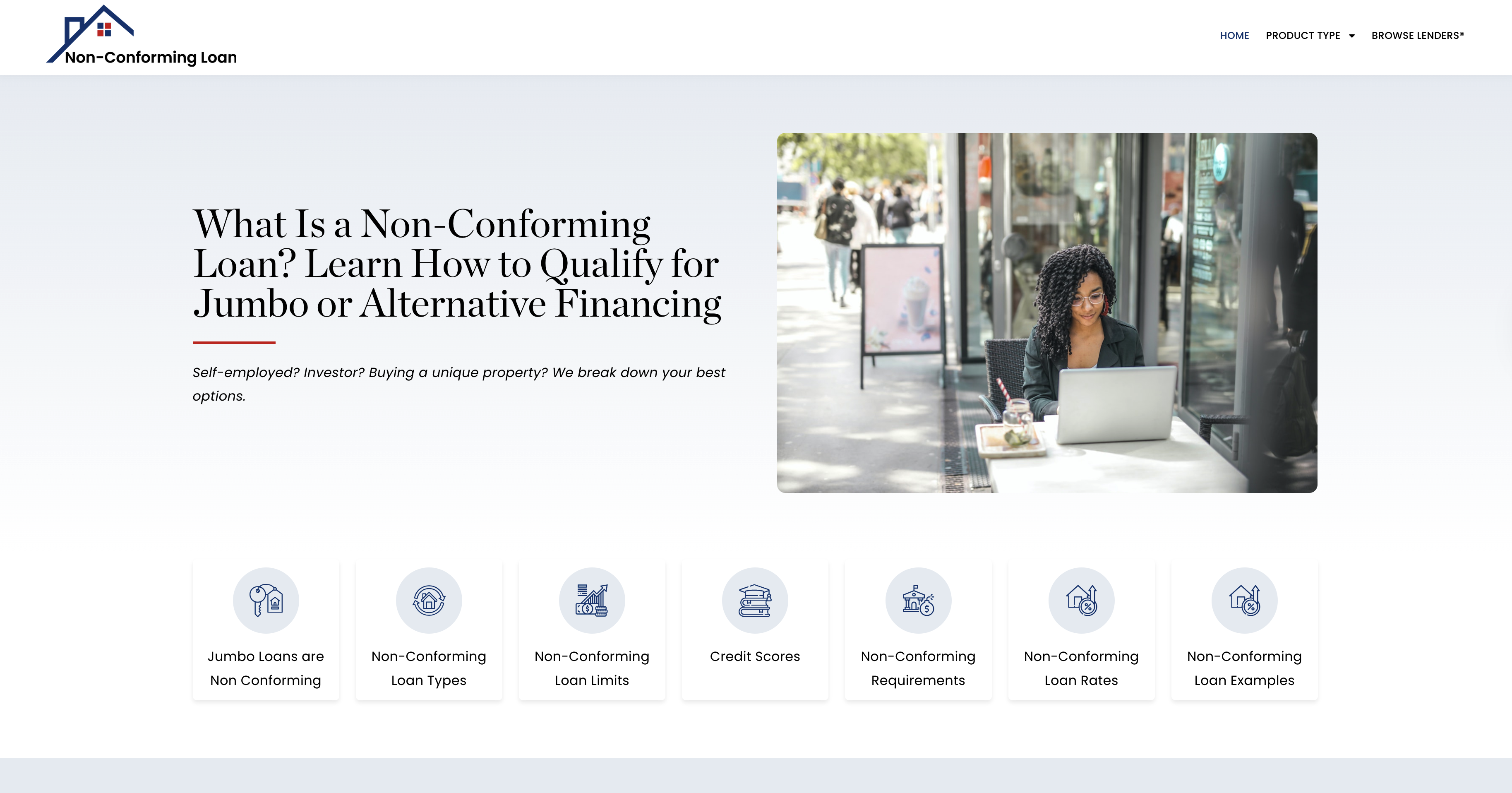Credit Score Improvement Tracker: Visualize how strategic improvements boost your mortgage eligibility.
Your credit score isn’t just a number—it’s a critical factor that determines your eligibility for mortgage loans, the interest rates you’re offered, and ultimately, how much house you can afford. In particular, your Middle Credit Score®—the median score across Equifax, Experian, and TransUnion—is what lenders typically rely on when evaluating your mortgage application.
The Credit Score Improvement Tracker is a powerful, actionable tool designed to help you take control of your credit profile. It lets you monitor how targeted financial behavior affects your score, and how those improvements translate to lower rates, better loan options, and increased home buying power. For anyone preparing to enter the mortgage market, this tracker serves as both a diagnostic tool and a motivational roadmap.
In this guide, you’ll learn how to build, interpret, and benefit from your personalized tracker. You’ll understand the relationship between score changes and mortgage benefits, how to set realistic goals, and how to use data to advocate for better lending terms.
Why Tracking Credit Improvements Matters
Credit improvement is often slow and nonlinear. You may take several actions in one month and see no change, then suddenly see a jump the next. Without a visual representation of your progress, it’s easy to feel like your efforts aren’t working. That’s where a tracker becomes invaluable.
Tracking keeps you engaged and informed. It gives you a clear picture of how each improvement—whether it’s paying off a credit card, removing a collection, or becoming an authorized user—affects your Middle Credit Score®. Most importantly, it ties these credit changes to tangible mortgage outcomes.
The impact of a score increase:
- A 20-point boost can lower your interest rate and reduce your monthly payment by $50–$100.
- A 40-point gain could eliminate private mortgage insurance (PMI), saving you $200–$400 per month.
- A 60-point increase may help you qualify for entirely different (and better) mortgage programs.
With the tracker, you don’t just monitor numbers—you measure the financial opportunities your credit improvements unlock.
Step 1: Establish Your Baseline
You can’t improve what you don’t measure. Start by collecting your latest credit reports and scores from each of the three major bureaus. Use a service like AnnualCreditReport.com to access your free reports, and use tools like Credit Karma or Experian to obtain your score data.
Record the following:
- Date of credit report pull
- Equifax score
- TransUnion score
- Experian score
- Your Middle Credit Score® (the one that falls in the middle of the three)
- Open and closed accounts
- Credit card balances and utilization percentages
- Negative marks (collections, charge-offs, late payments)
- Number of hard inquiries
This baseline becomes your reference point for all future tracking. Make it the foundation of your Credit Score Tracker spreadsheet or digital dashboard.
Pro Tip: Screenshot your reports and store them in a folder labeled by month. This way, you can go back and verify changes if needed.
Step 2: Set Specific Improvement Goals
Vague goals like “I want a better credit score” won’t motivate sustained action. Instead, set specific, measurable, time-bound goals that are tied to the credit score ranges lenders use.
Score brackets that matter to mortgage lenders:
- Below 580: Poor – Unlikely to qualify without significant down payment
- 580–619: Subprime – Eligible for FHA with 10% down
- 620–679: Fair – May qualify for FHA or some conventional programs
- 680–739: Good – Access to better rates and 3–5% down options
- 740+: Excellent – Prime rates and best mortgage terms available
Examples of SMART goals:
- “Increase my Middle Credit Score® from 615 to 680 in 9 months.”
- “Remove 2 collections and reduce credit utilization from 65% to below 30% in 4 months.”
- “Raise my score to 740+ within 12 months to qualify for the best conventional rates.”
Assign these goals to timeline milestones in your tracker. Update your progress monthly or bi-monthly, and note what you’re doing to influence each metric.
Step 3: Input Monthly Updates
This is the heart of your tracker. Each month, input your updated credit scores and annotate what actions you took and what results you observed.
Track:
- Equifax, TransUnion, and Experian scores
- Middle Credit Score®
- Debt payments made (amount and to whom)
- Collections removed or settled
- Disputes filed
- Authorized user additions
- Credit limit increases requested or granted
- New accounts opened or closed
- Hard inquiries (and from where)
Example:
- Month: April 2025
- Action: Paid down Chase card from $3,000 to $500
- Utilization Impact: Dropped from 89% to 14%
- Score Change: +22 points
- New Middle Score: 643
Make it visual: Use charts, graphs, or color-coded boxes to show monthly trends. Highlight your highest score gains and flag any setbacks with explanations (e.g., a temporary score drop due to a new inquiry).
Step 4: Correlate Score Gains to Mortgage Benefits
This is where your tracker becomes a powerful financial planning tool. Link score changes directly to their impact on mortgage approval and cost.
Examples:
- Score improved from 620 to 660: Now qualifies for 5% down conventional loan instead of 10% FHA.
- Score increased from 685 to 725: Interest rate drops from 7.1% to 6.4% = $134/month savings on a $300,000 loan.
- Score jumped from 695 to 740: PMI removed = $270/month saved.
Add a calculator tab to your tracker spreadsheet to simulate monthly payment savings based on your score gains. Update it quarterly to see how much your improved credit is worth in dollar terms.
Sample savings scenario:
- Loan Amount: $350,000
- APR at 660: 7.5% = $2,447/month
- APR at 720: 6.2% = $2,143/month
- Monthly Savings: $304
- Annual Savings: $3,648
Step 5: Leverage the Tracker in Conversations with Lenders
Your Credit Score Improvement Tracker is not just for personal use—it’s a strategic tool to use with mortgage professionals. When you show a lender that you’ve been actively improving your credit, they may:
- Offer pre-qualification now with plans to re-lock once you hit a better rate bracket
- Waive or delay certain application steps while your score improves
- Provide recommendations based on the progress you’ve made
Bring your tracker to pre-approval meetings. Use it to ask intelligent questions about which programs become available at specific score levels and how close you are to achieving them.
Pro Tips for Maximizing Tracker Use
- Create a “Score Impact Log”: Track what action led to each score change and how many points it affected.
- Track Revolving Utilization by card: This helps pinpoint which account is dragging your score down.
- Add Notes Columns: Use it to record communications with creditors or bureaus.
- Include Timelines for Disputes: This helps follow up if a bureau misses the 30-day dispute window.
- Plan 90 Days Ahead: Most mortgage lenders want to see at least 90 days of improved behavior before approving a loan.
- Avoid New Debt or Inquiries within 60–90 days of applying for a mortgage.
Real-World Case Study: From Denial to Approval
Angela’s Story: Angela, a 33-year-old healthcare administrator in Phoenix, had always dreamed of owning her own home. She was a steady saver, financially responsible in her day-to-day life, and paid her bills on time—yet her credit score told a different story. When she applied for a mortgage in early 2024, her Middle Credit Score® came back at 618, leading to an automatic denial from the lender. The rejection came as a shock, not because she didn’t expect some hurdles, but because she hadn’t fully understood how certain blemishes on her credit report, even minor ones, could severely limit her options.
Angela decided to take the rejection as a wake-up call. Instead of abandoning her goal, she channeled her energy into a plan: to improve her credit and become mortgage-ready within six months. Her first step was to create a Credit Score Improvement Tracker. She designed a simple spreadsheet that tracked each bureau’s score month-by-month, alongside every action she planned to take and its corresponding impact.
Month 1: She began by pulling her full credit reports and conducting a detailed review. She found two medical collection accounts, both under $500, that were affecting all three reports. She disputed one, which she believed was an error, and negotiated a pay-for-delete agreement on the second. By providing documentation and following up diligently, she got both removed within 45 days. This alone led to a 17-point boost across her reports.
Month 2: Angela focused on her credit utilization. She had two credit cards that were nearly maxed out, which she’d been slowly paying down for months. By using part of her tax return and tightening her budget, she reduced both cards to under 30% of their limits. Her score increased again—this time by 21 points. Her Middle Credit Score® was now 656, up from 618 in just eight weeks.
Month 3: She turned her attention to hard inquiries. She had shopped for a car the previous year, resulting in multiple inquiries. Some were over 12 months old and no longer impacting her score, but four were still active. She filed a complaint with the Consumer Financial Protection Bureau (CFPB), explaining that some of the inquiries were duplicates. Two were successfully removed. Though this didn’t increase her score drastically, it cleaned up her report and showed positive movement.
Month 4: Angela researched authorized user strategies. She asked her mother, who had an 18-year-old credit card with a $15,000 limit and perfect payment history, to add her as an authorized user. Within a few weeks, this tradeline appeared on her report. This significantly improved her average age of credit accounts and dropped her utilization even further. By the end of the month, her Middle Credit Score® was 675.
Angela updated her tracker religiously. She noted every change—big or small—and reflected on what worked best. For example, she discovered that a small increase in her credit limit (requested from one of her card issuers) helped reduce her utilization ratio with no added cost. She also added a section to the tracker where she simulated what her monthly mortgage payments would look like at different interest rates.
In Month 5, she started working with a loan officer who had been monitoring her progress. Because her tracker showed not only score improvements but also financial discipline and credit education, the loan officer was impressed. Together, they reviewed loan programs. By Month 6, Angela was pre-approved for an FHA loan at a 6.5% interest rate—down from her original quoted rate of 7.4%. She had enough for her down payment, a strong DTI ratio, and most importantly, a clear picture of her financial growth.
Angela closed on her first home three months later. Today, she still uses her tracker—not for a mortgage, but to prepare for future financial goals like refinancing and investing.
Her story underscores a powerful truth: Credit transformation doesn’t require perfection. It requires persistence, structure, and visibility. Angela’s tracker became more than just a spreadsheet. It became a mirror of her financial maturity and a tool that turned denial into approval—and a dream into reality.
- Month 1: Identified two collection accounts, disputed one and settled the other.
- Month 2: Paid down two credit cards below 30% utilization.
- Month 3: Removed four hard inquiries that were over 12 months old via CFPB complaint.
- Month 4: Became an authorized user on her mother’s 18-year-old credit card with perfect payment history.
By Month 6, Angela’s Middle Credit Score® reached 675. Her lender re-ran her credit and approved her for a 5% down FHA loan with a 6.5% interest rate—down from the original 7.4%.
She used her tracker to show the lender exactly what had changed, helping the underwriter expedite her approval.
Improving your credit score is a marathon, not a sprint—but it’s one of the most powerful financial decisions you can make when preparing for homeownership. The Credit Score Improvement Tracker gives you clarity, control, and momentum. It helps you track what matters, avoid common pitfalls, and link each improvement to real-life mortgage benefits.
By using this tool consistently and strategically, you can raise your Middle Credit Score®, lower your costs, and position yourself as a strong, qualified borrower. Start your tracker today—your mortgage-ready future begins with the steps you take now.
Middle Credit Score® Support Center
Browse Lenders® – Speak with a Lending Expert






